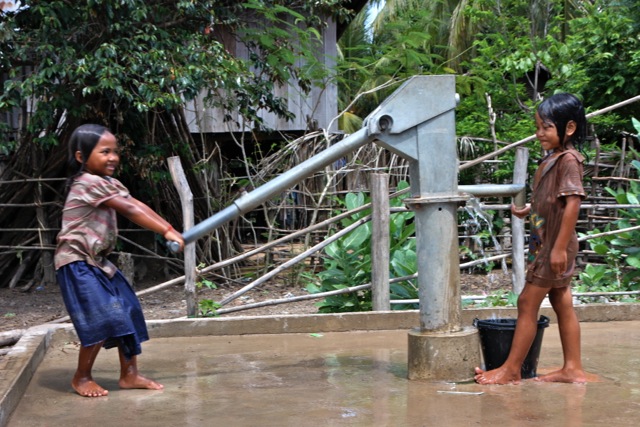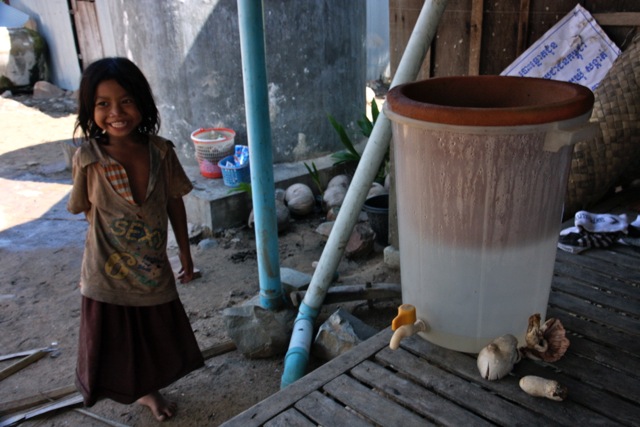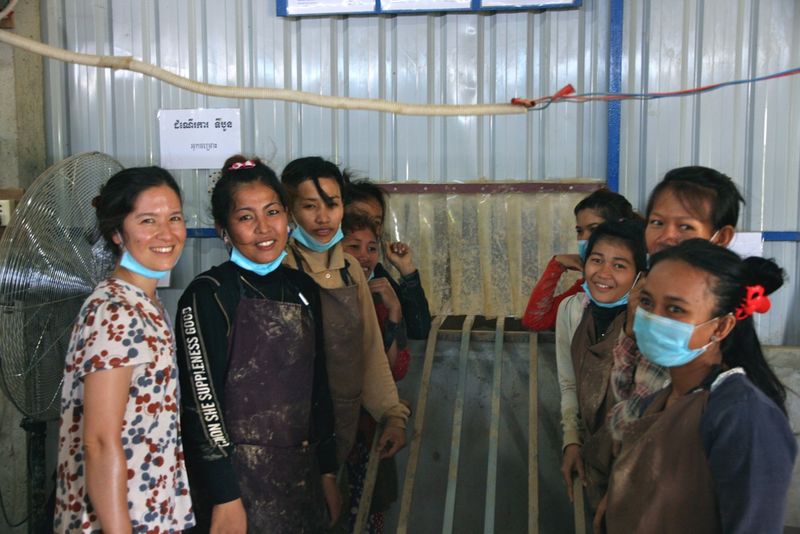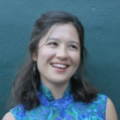Patrons and Partners in Climate Compatible Development: The Water Filter Story
My doctoral work opens the black box of practice (Mosse 2004) to examine how climate-compatible development projects that utilize carbon finance can enable (or hinder) local economic development. Together with my research assistant, Yiting Wang, we have documented the importance of water filter distribution networks on local livelihoods. Our finding is significant because, at present, there are no reporting or design requirements on distribution networks when designing a climate-compatible development project, a gap we hope to redress given their key significance for the project outcome.

Carbon finance for a significant development problem
Water-borne disease is a primary cause of illness in the global south, and lack of access to clean water kills more people annually than war, weapons of mass destruction and terrorism combined (Bartram et al. 2014). 40% of the global population lacks clean sanitation. Further, access to clean water in developing countries is complicated by increasing flood and drought events precipitated by climate change (WHO and UNICEF 2012). In 2012, the UN General Assembly formally acknowledged that access to safe, clean drinking water and sanitation are essential to the realization of all human rights (UNGA 2010).
In 2005, the international carbon market was launched under the Kyoto Protocol, awarding fungible "carbon offsets" for the delivery of development services that displaced activities that would otherwise generate greenhouse gas emissions (UNFCCC 1997). Two years later, the voluntary carbon market followed and has remained a viable channel for public-private partnerships to address poverty alleviation (Peters-Stanley 2013). My doctoral work looks at the development outcomes associated with the carbon market, and the water filter cases usefully illustrate the importance of how project design determines rural impact, even when the target community and technology type are held constant.

The cases
The voluntary carbon market currently issues carbon credits for two point-of-use water filter projects, one in Cambodia, called Hydrologic, and the other in Western Kenya, called Lifestraw. (The Gold Standard Foundation 2011). Both projects have achieved ?Gold Standard? voluntary market certification for their ability to demonstrate local environmental, social and economic benefits. My research assistant Yiting Wang and I visited households connected with the projects and conducted 60 in-depth, semi-structured interviews with project participants. We discovered significant variation in local impacts due to structural differences between the project designs.
The key difference that we found related to the distribution strategy of the technologies. Lifestraw distributed the filters for free, and was able to distribute nearly 900,000 units to village households in just one month. However, there are no mechanisms to expand the program beyond the one-off giveaway. Hydrologic has distributed significantly less units, ~175,000 to date, but the long term potential for the project is more promising given that the market drivers of supply and demand are fully functional ? Khmer residents are able to order point-of-use ceramic water filters from a factory in Kampong Ch?nang, and their orders translate into wages for local workers and project managers.
While both Hydrologic and Lifestraw claim to be fully funded through carbon finance, the funds are utilized differently. Lifestraw uses them to pay off the initial investment in free filters, whereas Hydrologic has set up an intrinsic revenue model to perpetuate the project through local demand and local manufacturing. The impacts on livelihood also diverge. The Lifestraw case relies on volunteer labor to spot-check that the filters are being used. Hydrologic's model creates a network of gainful employment from factory management, technology distributors, carbon finance managers and sales agents.
Yiting and I argue that these cases represent "patronage" versus "partnership" typologies in project design, where Lifestraw?s design is similar to top-down emergency aid and Hydrologic invests in slowly fostering a local enterprise over the long term. The patronage versus partnership typology raise questions for climate-compatible project design:
- How do we balance the value of achieving rapid technology distribution at scale versus the long-term task of creating and supporting a local enterprise?
- When is the patronage model appropriate, and when is the partnership model more useful?
- Which model represents the more appropriate use for carbon finance?

Further reading:
- Bartram, J, et al. (2014), 'Focusing on improved water and sanitation for health. Millennium project', Lancet, 365, 810-12.
- Baumgartner, Jill, Murcott, Susan, and Ezzati, Majid (2007), 'Reconsidering'appropriate technology': the effects of operating conditions on the bacterial removal performance of two household drinking-water filter systems', Environmental Research Letters, 2 (2), 024003.
- Clasen, Thomas F, et al. (2004), 'Reducing diarrhea through the use of household-based ceramic water filters: a randomized, controlled trial in rural Bolivia', The American journal of tropical medicine and hygiene, 70 (6), 651-57.
- Lantagne, Daniele, et al. (2008), 'Comment on ?Point of use household drinking water filtration: A practical, effective solution for providing sustained access to safe drinking water in the developing world?', Environmental science & technology, 43 (3), 968-69.
- Mosse, David (2004), 'Is good policy unimplementable? Reflections on the ethnography of aid policy and practice', Development and change, 35 (4), 639-71.
- Peters-Stanley, Molly (2013), 'Maneuvering the Mosaic: State of the Voluntary Carbon Markets 2013', in Ecosystem Marketplace (ed.), (Ecoystem Marketplace).
- The Gold Standard Foundation (2011), 'Technologies and Practices to Displace Decentralized Thermal Energy Consumption', (Geneva).
- UNFCCC (1997), 'Kyoto Protocol to the United Nations Framework Convention on Climate Change', 23.
- UNGA (2000), 'United Nations Millennium Declaration', (NY: UN).
- --- (2010), 'General Assembly Adopts Resolution Recognizing Access to Clean Water, Sanitation as Human Right, by Recorded Vote of 122 in Favour, None against, 41 Abstentions', (NYC: UN).
- WHO and UNICEF (2012), 'Progress on Drinking Water and Sanitation: Joint Monitoring Programme Update 2012', in WHO and UNICEF (eds.).
- For a full list of Gold Standard Water Filter Projects at varying stages of the pipeline, see: http://www.goldstandard.org/about-us/project-registry
About the author:
Jasmine Hyman is an environmental finance expert, specializing in rural and climate-compatible development projects. In 2004, she helped to establish the Gold Standard Foundation, a certification scheme that recognizes best practices in carbon finance. She is also on the board of Nexus Carbon-for-Development, a project partner for Hydrologic. She is currently evaluating the impact of the Gold Standard and other ?charismatic? carbon projects as a doctoral candidate at Yale School of Forestry & Environmental Studies.




